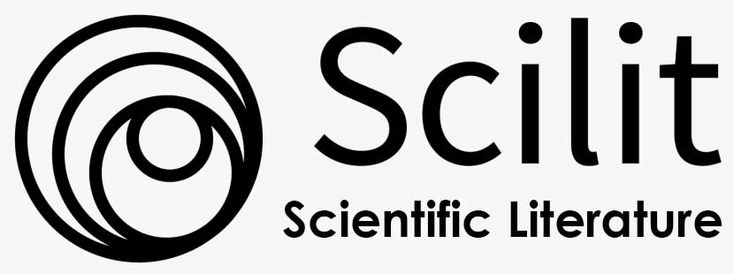UV VIS STUDY IN INTERACTION ASTAXANTHIN AND GLYCATED BSA
Abstract
Keywords
Full Text:
PDFReferences
Ambigaipalan, P. & Shahidi, F. 2017. Bioactive peptides from shrimp shell processing discards: Antioxidant and biological activities. Journal of Functional Foods, 34: 7–17.
Bern, M., Sand, K.M.K., Nilsen, J., Sandlie, I. & Andersen, J.T. 2015. The role of albumin receptors in regulation of albumin homeostasis: Implications for drug delivery. Journal of Controlled Release, 211: 144–162.
Chen, W.P., Xiong, Y., Shi, Y.X., Hu, P.F., Bao, J.P. & Wu, L.D. 2014. Astaxanthin reduces matrix metalloproteinase expression in human chondrocytes. International Immunopharmacology, 19(1): 174–177.
Coral-Hinostroza, G.N. & Bjerkeng, B. 2002. Astaxanthin from the red crab langostilla (Pleuroncodes planipes): Optical R/S isomers and fatty acid moieties of astaxanthin esters. Comparative Biochemistry and Physiology - B Biochemistry and Molecular Biology, 133(3): 437–444.
Fang, Y.-Z., Yang, S. & Wu, G. 2002. Regulation Of Physiological Systems By Nutrients Free Radicals, Antioxidants, and Nutrition. 9007(02): 872–879.
Fasano, M., Curry, S., Terreno, E., Galliano, M., Fanali, G., Narciso, P., Notari, S. & Ascenzi, P. 2005. Critical Review The Extraordinary Ligand Binding Properties of Human Serum Albumin. 57(December): 787–796.
GLAZER, A.N. & ROSENHECK, K. 1962. Solvent and conformational effects on the ultraviolet spectra of polypeptides and substituted amides. The Journal of biological chemistry, 237(12): 3674–3678.
Guerin-Dubourg, A., Catan, A., Bourdon, E. & Rondeau, P. 2012. Structural modifications of human albumin in diabetes. Diabetes and Metabolism, 38(2): 171–178.
He, Y., Yu, Z., He, J., Zhang, H., Liu, Y. & Lei, B. 2018. Ratiometric and selective fluorescent sensor for Fe(III) and bovine serum albumin based on energy transfer. Sensors and Actuators, B: Chemical, 262(Iii): 228–235.
Kawasaki, S., Mizuguchi, K., Sato, M., Kono, T. & Shimizu, H. 2013. A Novel Astaxanthin-Binding Photooxidative Stress-Inducible Aqueous Carotenoprotein from a Eukaryotic Microalga Isolated from Asphalt in Midsummer. 54(7): 1027–1040.
Kumirska, J., Kaczy, Z. & Bychowska, A. 2010. Application of Spectroscopic Methods for Structural Analysis of Chitin and Chitosan. 1567–1636.
Lange, R., Frank, J., Saldana, J.L. & Balny, C. 1996. Fourth derivative UV-spectroscopy of proteins under high pressure: I. Factors affecting the fourth derivative spectrum of the aromatic amino acids. European Biophysics Journal, 24(5): 277–283.
Li, X., Wang, G., Chen, D. & Lu, Y. 2015. β-Carotene and astaxanthin with human and bovine serum albumins. Food Chemistry, 179: 213–221.
Masuelli, M.A. 2013. Study of Bovine Serum Albumin Solubility in Aqueous Solutions by Intrinsic Viscosity Measurements. 2013.
Matthews, S.J., Ross, N.W., Lall, S.P. & Gill, T.A. 2006. Astaxanthin binding protein in Atlantic salmon. Comparative Biochemistry and Physiology - B Biochemistry and Molecular Biology, 144(2): 206–214.
Ott, C., Jacobs, K., Haucke, E., Navarrete Santos, A., Grune, T. & Simm, A. 2014. Role of advanced glycation end products in cellular signaling. Redox Biology, 2(1): 411–429.
Rajendran, P., Nandakumar, N., Rengarajan, T., Palaniswami, R., Gnanadhas, E.N., Lakshminarasaiah, U., Gopas, J. & Nishigaki, I. 2014. Antioxidants and human diseases. Clinica Chimica Acta, 436: 332–347.
Roche, M., Rondeau, P., Singh, N.R., Tarnus, E. & Bourdon, E. 2008. The antioxidant properties of serum albumin. FEBS Letters, 582(13): 1783–1787.
Sadowska-Bartosz, I., Stefaniuk, I., Galiniak, S. & Bartosz, G. 2015. Glycation of bovine serum albumin by ascorbate in vitro: Possible contribution of the ascorbyl radical? Redox Biology, 6: 93–99.
Sakata, N., Moh, A. & Takebayashi, S. 2002. Contribution of superoxide to reduced antioxidant activity of glycoxidative serum albumin. Heart and Vessels, 17(1): 22–29.
Sowmya, P.R.R., Arathi, B.P., Vijay, K., Baskaran, V. & Lakshminarayana, R. 2017. Astaxanthin from shrimp efficiently modulates oxidative stress and allied cell death progression in MCF-7 cells treated synergistically with β-carotene and lutein from greens. Food and Chemical Toxicology, 106: 58–69.
Sowmya, R. & Sachindra, N.M. 2012. Evaluation of antioxidant activity of carotenoid extract from shrimp processing byproducts by in vitro assays and in membrane model system. Food Chemistry, 134(1): 308–314.
Taghavi, F., Habibi-Rezaei, M., Amani, M., Saboury, A.A. & Moosavi-Movahedi, A.A. 2017. The status of glycation in protein aggregation. International Journal of Biological Macromolecules,100:67–74.
Treatment, E.F., Jian, W., Wang, L., Wu, L. & Sun, Y. 2018. Physicochemical Properties of Bovine Serum Albumin-Glucose and Bovine Serum Albumin-Mannose Conjugates Prepared by Pulsed.
Ulrich, P., Ulrich, P. & Cerami, A. 2001. Protein Glycation, Diabetes, and Aging.
Wol, S.P., Jiang, Z.Y. & Huwr, J. V 1991. Diabetes Mellitus And Ageing. 10: 339–352.
Yamagishi, S.I. 2013. Advanced Glycation End-Products. Brenner’s Encyclopedia of Genetics: Second Edition, Elsevier Inc.
Yuan, C., Jin, Z. & Xu, X. 2012. Inclusion complex of astaxanthin with hydroxypropyl-β-cyclodextrin: UV, FTIR, 1H NMR and molecular modeling studies. Carbohydrate Polymers, 89(2): 492–496.
Zhu, T. & Row, K.H. 2013. Extraction of Astaxanthin from Shrimp Waste using Response Surface Methodology and a New Hybrid Organic-Inorganic Monolith. Separation Science and Technology (Philadelphia), 48(10): 1510–1517.
DOI: http://dx.doi.org/10.21776/ub.jeest.2019.006.01.4
Refbacks
- There are currently no refbacks.

This work is licensed under a Creative Commons Attribution 4.0 International License.







